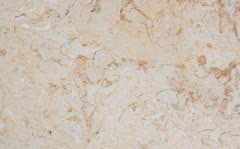Following on from my origins of marble piece here's a little info on Greek Marble -
The greek marble types are well known all over the world since they have been associated with the masterpieces of sculpture and architecture of ancient Greece, with unique and exceptional works of art, that through the centuries have always been the focus of world attention and praise. The Greek sculptors and architects had discovered that stone and marble were the building materials with the exceptional beauty that with their natural grace could convert the lifeless constructions into masterpieces of art.
The Venus of Milos, Hermes of Praxitelis, Victory of Samothrace, but also the Parthenon, the Erechtheum, the Propylaea of Acropolis of Athens are only a few representative samples of expression of the ancient spirit upon the unrivalled Greek marble.
Marble quarrying in Greece started several centuries ago. Since the Medium Neolithic era (about 5000 b.C.) we have marble female idols, whilst later the series of the famous Cycladic idols followed. In the 6th b.C., marble was used in combination with porous stone for the construction of several monuments such as the Zeus in Olympia, as well as the temple Apollo in Delphi, with the marble of Paros in the façade and the porous stone for the rest of the construction.
In the 5th and 6th b.C., marble had wide uses. The quarries on Cyclades islands offered plentiful raw material. In Paros the white homogenous marble was quarried and easy to carve. The marble was known to ancient people as Paria or Parios lithos or Lychnitis, because its excavation was made in underground galleries under the light of small lamps (‘Lychnaria’). This type of marble was used in several masterpieces of sculpture, such as Hermes of Praxitelis and Venus of Milos etc.
Subscribe to:
Post Comments (Atom)








No comments:
Post a Comment